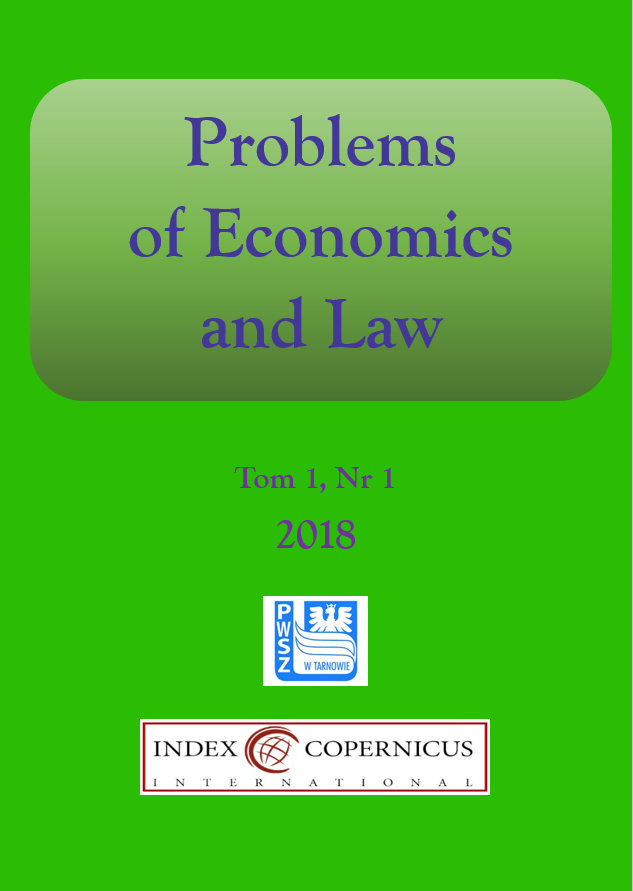Economic and environmental sustainability of tourism in rural areas
DOI:
https://doi.org/10.5604/01.3001.0012.8256Keywords:
attractive, tourism, rural areasAbstract
Aim of the study: The purpose of the work was to classify the communes of the West Pom-eranian Voivodeship in terms of the development of agritourism farms there.
Material and methods: The article uses Hellwig's parametric method, which was used to assess the attractiveness of the communes of the West Pomeranian voivodeship in terms of the development of agritourism farms in them. The use of aggregate analysis by a generalized k-means method was used. Cluster analysis served as a tool for exploratory data analysis.
Results: Due to the attractiveness of tourist attractions, the highest value was given to the municipalities of the Zachodniopomorskie voivodship belonging to the cluster of 2, and the poorest community belonging to the cluster 1. From the analysis of average normalized quan-titative variables it can be seen that the municipalities belonging to cluster 2 are more attrac-tive in terms of development of rural tourism than municipalities belonging to the cluster 1.
Conclusions: Uneven spatial distribution of tourism assets in the West Pomeranian Voi-vodeship can lead to variable tourist traffic. The presented research results may be an inspira-tion to carry out spatial division of individual municipalities into groups of diversification of tourist attractiveness and their impact on tourist traffic of regions.
Downloads
References
DRZEWIECKI, M., 2001. Podstawy agroturystyki. OWOPO, Bydgoszcz. Google Scholar
HALAMSKA, M., 2009. Uwagi o naturze wiejskości i sposobie jej definiowania, w: Człowiek – miasto – region. Związki i interakcje, red. G. Gorzelak, M.S. Szczepański, W. Ślęzak-Tazbir. Wydawnictwo Scholar. Google Scholar
KOKOSZA, 2013. Ochrona środowiska na terenach wiejskich w świetle nowej perspektywy wspólnej polityki rolnej unii europejskiej 2014-2020, Kraków. Google Scholar
KOSTROWICKI, A.S., 1970, Zastosowanie metod geobotanicznych w ocenie przydatności terenu dla potrzeb rekreacji i wypoczynku, Przegląd Geograficzny t.42, z.4, Warszawa, s. 631-645. Google Scholar
LIJEWSKI, T., MIKUŁOWSKI, B., WYRZYKOWSKI, J., 2008, Geografia turystyki Polski, PWE, Warszawa. Google Scholar
PEREPECZKO, B. ,2010. Świadomość ekologiczna mieszkańców obszarów chronionych. „Wieś Jutra” nr 10. Google Scholar
PREOBRAZENSKI, V.S., ZORIN, I.V., VEDENIN Y.A., 1975. Geograficieskije aspekty konstruirowanija rekreacionnych system. Seria Geografia nr 1. Google Scholar
PRETTY J. 2008. Agricultural sustainability: concepts, principles and evidence Phil. Trans. R. Soc. B (2008) 363, 447–465. Google Scholar
ŚLUSARZ, G., GOŁĘBIEWSKA, B., 2014. Wykorzystanie endogenicznych, cennych przyrodniczo zasobów regionu w jego rozwoju. Roczniki Naukowe Stowarzyszenia Ekonomistów Rolnictwa i Agrobiznesu, t. XVI, z. 6. Google Scholar
WYRZYKOWSKI, J., 1986, Geograficzne uwarunkowania rozwoju urlopowej turystyki wypoczynkowej w Polsce, Acta Universitatis Wratislaviensis, Wrocław nr 935, Studia Geograficzne nr XLIV, Wrocław. Google Scholar
Downloads
Published
How to Cite
Issue
Section
License
Copyright (c) 2018 State Higher Vocational School in Tarnow, Poland & Authors

This work is licensed under a Creative Commons Attribution-ShareAlike 4.0 International License.





